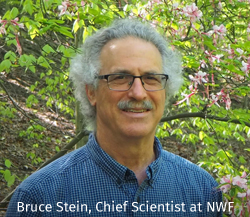 What is the difference between climate adaptation and mitigation?
What is the difference between climate adaptation and mitigation?
Addressing the challenge of climate change will require action on two fronts: climate mitigation and climate adaptation. Climate mitigation efforts are designed to address the underlying problem by slowing—and ultimately reversing—accumulation of greenhouse gases in the atmosphere driving global warming. Climate adaptation, in contrast, is about addressing the impacts of climate change, now and into the future, by taking actions that reduce climate risks to people and wildlife.
What is the latest science telling us about how to protect and restore our coastal communities and ecosystems?
Rising sea levels, stronger storms, and other climate-related changes are putting additional strains on coastal communities and ecosystems. . Historically, coastal communities have relied on hard infrastructure, like seawalls and breakwaters, for protection but there is now strong scientific evidence for the use of "nature-based solutions". This includes protecting intact natural systems, which already provide protective benefits, as well as restoring the natural function of degraded systems. Nature-based approaches can often be more effective, and cost-effective, than traditional hard infrastructure, and with proper stewardship can often self-adjust and keep pace with changing climatic conditions.
Is it too late to save our coasts?
Coastlines are naturally dynamic. Rising sea levels and more severe storms will almost certainly cause changes in the boundary between sea and land and in many places lead to shifts from one habitat type to another. For example, in some areas we already are seeing salt marsh moving landward and replacing coastal forests. Unfortunately, development along much of the coast has led to a hardening of much of our shoreline, in an often-futile effort to stabilize a naturally dynamic system. Working to soften our shorelines through restoring natural systems offers one of the best opportunities for meeting the needs of both people and wildlife. As the climate impacts on our coasts accelerate, communities and coastal zone planners will be facing many hard decisions about where and how to manage for an increasingly dynamic and changing coast.
If you'd like to read more click here

